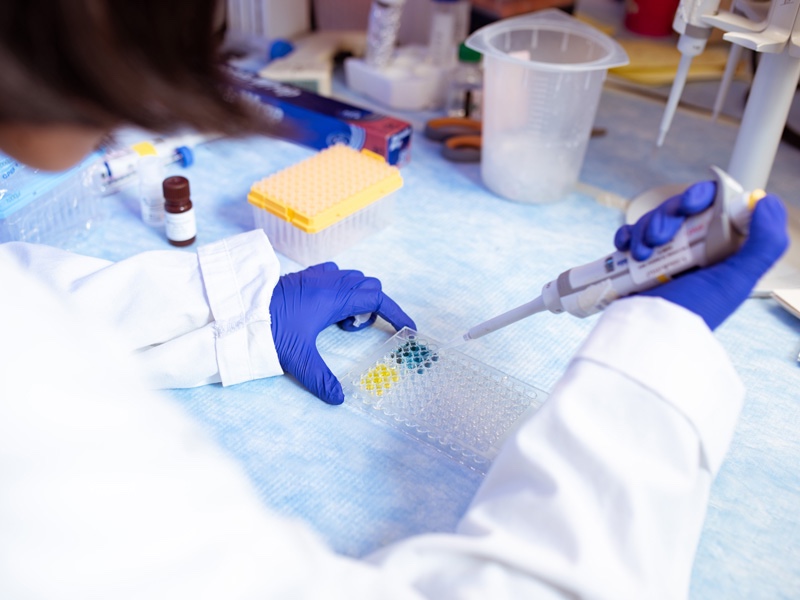A June 16, 2022 edition of the materials science journal Advanced Materials includes a study, published by a team at the University of Houston, on 3D printed, micro-scale, organic electronics. The team was led by UH professor Mohammad Reza Abidjan, director of the Advanced Regenerative Biomaterials and Therapeutics for Neural Interfaces laboratory at the university.
The study revolved around the team’s creation of a unique 3D printing resin, infused with an organic semiconductor (OS) material. The researchers used the resin to print multiple objects, including a micro-printed circuit board, on a multi-photon lithography (MPL) 3D printer.

In the article, the team concludes, “We anticipate that the presented MPL-compatible OS composite resins will pave the path towards production of soft, bioactive, and conductive microstructures for various applications in the emerging fields of flexible bioelectronics, biosensors, nanoelectronics, organ-on-chips, and immune cell therapies.”
Notably, the team found that adding just one-half-of-one percent of the OS material in the resins yielded about 10 orders of magnitude (about 100 times greater) electrical conductivity compared to other MPL-based methods. Additionally, one of the objects the researchers created was a glucose biosensor, which they infused with laminin and glucose oxidase. Prior to printing, the team ran experiments to ensure that the OS composite microstructures retained bioactivity during the MPL process.

It found that, compared to the control group, the microstructures retained 94 percent bioactivity during printing. Once this was determined, the biosensor itself was printed. The team determined it to be 10 times more sensitive than existing glucose biosensors.
All the other divisions within the 3D printing sector are becoming evermore commonplace these days, so it’s nice to see that some applications of the tech are still veering into the science fiction realm. Nano-printing probably represents the last remaining frontier of that quality, and the current example is better than most. In case it wasn’t clear, one of the optimal identified applications of the tech in the study is implanted neural chips.
Aside from this, there are a wide variety of other applications, most of them involving various forms of biomedical prostheses. In addition, of course, there’s the ever-growing field of wearable sensors. Presumably, that sector (like just about everything else humans consume, to be sure) will continue to create ever-increasing amounts of garbage well into the future, so it would be a real breakthrough if “organic” in the case of electronics could eventually mean less environmentally destructive. That is, if we’re going to keep creating the garbage, we should try to make it out of as much of something that’s decomposable, as possible.
Images courtesy of University of Houston
Subscribe to Our Email Newsletter
Stay up-to-date on all the latest news from the 3D printing industry and receive information and offers from third party vendors.
You May Also Like
New Report: Semiconductor Industry to See $1.4B in 3D Printing Revenues by 2032
“The semiconductor sector has become the most strategically significant area of global industry.” Truer words are hard to come by when it comes to the modern world, and they are...
Will Photonic-Crystal Lasers Revolutionize 3D Printing?
Powder bed fusion (PBF) for metals and polymers predominantly utilizes lasers as the primary heat source. Some directed energy deposition (DED) technologies also employ lasers, while various vat polymerization methods...
3D Printing Unpeeled: Orbex Investment, IndoMIM and HP, Ultrasonic Waves
INDO-MIM has bought three HP Metal Jet S100 printers, operating two in India and one in Texas. This is a win for HP because the company has deep experience in...
3D Printing Webinar and Event Roundup: April 21, 2024
It’s another busy week of webinars and events, starting with Hannover Messe in Germany and continuing with Metalcasting Congress, Chinaplas, TechBlick’s Innovation Festival, and more. Stratasys continues its advanced training...































